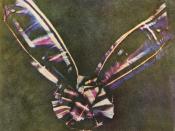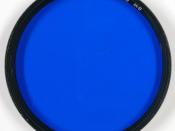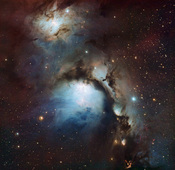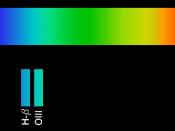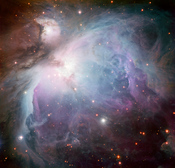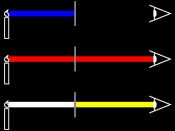Experiment 3- ColoursAim: To observe the effects of filters and coloured objects on white light.
Materials:ÃÂray box kitÃÂpiece of white paperÃÂpieces of coloured card and coloured filters: red, blue, yellow, green, orange, purple, cyanÃÂclear triangular prismMethod:PART A1.The ray box was placed on a sheet of white paper.
2.A triangular prism was placed on the paper and a full beam of light was shone onto it.
3.The prism was turned until the spectrum of colours formed.
4.Various coloured filters were placed between the light and the prism to see the spectrum change colour. Results were recorded.
Results:Colour of FilterColours Seen in SpectrumRedMainly RedYellow Yellow with Green & RedBlueBlue with small amount of GreenGreenGreen with small amount of Yellow & BlueOrangeOrange with Red & small amount of greenPurplePurple, but seemed dilutedCyanCyanThe experiment did not work as well as it could have because the filters werenÃÂt pure and there was outside light.
If it worked properly, the spectrum would only have shown the colour of the filter because proper filters are meant to absorb all other colours and transmit their colour.
PART BMethod:1.A full beam of light was shone onto a piece of red card. This was done four times with four different coloured filters (Red, Green, Blue & Yellow).
2.The same four colours of card (Red, Green, Blue & Yellow) were tested with each of the four coloured filters. Results were recorded.
Results:When a blue filter was placed between the light and red card, blue was reflected off the red card. However, no colour should have been reflected because the blue filter was meant to absorb all colours and transmit only blue, while the red card was meant to transmit only red. There should have been no colour transmitted and it should have appeared black because red, which was needed to reflect off the red card, should have been completely absorbed by the blue filter. The pattern continued with all the colours and the colour of the filter reflected off the card because the filters werenÃÂt pure and there was outside light.
Questions and Conclusions1.The results in Part A step 1 help you decide that green is refracted the most because it comes through a lot of the filters. Blue was refracted the least because it only came through some of the filters. These results were not accurate because there was outside light and the filters werenÃÂt pure. If it worked perfectly, the filters would have only let through their own colour.
2.When white light is shone through a yellow filter, all colours are absorbed and yellow is transmitted. However, this did not occur properly, because there was outside light and the filters werenÃÂt pure. This is why green and red were also transmitted.
3.If white light was shone through a red filter and then a green filter, the red filter would absorb all colours and transmit red, while the green filter would absorb all colours and transmit green, so there should be no light going through the two filters. However, some colours might go through because of outside light and impure filters.
4.A blue card is blue in white light because all colours are absorbed and blue is reflected. This makes the card appear blue.
5.If you placed the blue card in red light, you would see no light because the blue card absorbs all colours and transmits only blue, so if there is no blue in red light, no light is transmitted. However, because there is outside light and the filter wasnÃÂt pure, some blue light got through and reflected off the red card.
Experiment Done in class out of ScienceWorld 2
